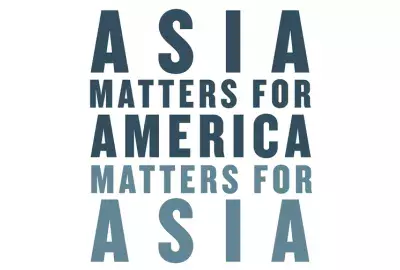Error message

SPECIAL SERIES: Philippine Perspectives on the 75th Anniversary of US-Philippines Bilateral Relations
Dr. Majah-Leah V. Ravago, Associate Professor at the Department of Economics, Ateneo de Manila University, former Program Director of a USAID energy policy grant, and East-West Center Graduate Fellowship alumnae, explains that "[t]he COVID-19 pandemic and the anticipated depletion of the Malampaya proffer opportunities to facilitate an efficient transition to cleaner energy."
In the Philippines, peak demand for electricity is expected to reach 54,655 MW by 2040 almost four times the demand in 2018. When COVID-19 hit the country and the rest of the world in March 2020, electricity generation and consumption declined as operations of industrial facilities and commercial establishments slowed down. As in larger economies, an upsurge in energy demand is expected as economic activities are starting to recover from the pandemic. Meeting energy demands as the economy recovers presents an even greater challenge since production levels from the Malampaya gas field, the country’s indigenous source of natural gas, are expected to decline substantially starting in 2022. The Malampaya gas field has been the Philippines’ sole source of natural gas since 2001. Discovered in 1990, under Service Contract no. 38, Malampaya allowed the country to use natural gas as fuel for electricity generation. Without a replacement energy source, a looming power crisis is foreseen as the Philippines stands to lose over 3,200 MW from existing gas plants, which generate 19 precent of the country’s total power.
Importing liquefied natural gas (LNG) is seen as the immediate solution to cover the gap. The COVID-19 pandemic and the anticipated depletion of the Malampaya proffer opportunities to facilitate an efficient transition to cleaner energy. Given mounting environmental concerns, new investments in coal plants may be replaced by investments in LNG-fueled plants. Natural gas could play a crucial role in lowering the Philippines’ carbon emissions given that it emits 50 to 60 percent less carbon dioxide than coal. Natural gas can also ease the intermittency problem of solar and wind through its quick start-up and shutdown capacity. As an alternate energy source, natural gas, would also potentially allow for more competitive electricity costs owing to the current oversupply of natural gas and the relative ease of transport given the prevalence of liquefaction technology.
Nonetheless, its promise as a transition fuel is moderated by the capital investment and operating expenditure of LNG infrastructure projects, volatile spot prices, and potential operational and contractual inflexibilities. The Institute of Energy Economics and Financial Analysis estimates the cost of LNG import infrastructure to be $1.3 billion per GW. Gas markets across the globe are also yet to be integrated. In contrast to the established markets in the USA and Europe and their pricing benchmarks, the LNG market in Asia is still developing. Asia’s LNG is indexed according to the price of oil, which makes its spot prices subject to the volatility of oil prices. The operational flexibility of natural gas plants to balance the intermittency of renewables would also depend on the type of gas plant technology used. Similarly, the viability of LNG as an efficient transition to cleaner energy will depend on the structure of contractual arrangements. Currently, arrangements with existing gas power plants are take-or-pay contracts that require consumers to pay for capacity even if it goes unused. If new contracts were to unnecessarily follow this structure, the country would be locked-in to higher rates when renewable energy is cheaper and more plentiful.
Private investors are racing to construct an LNG terminal. The first one to operate has the potential to capture a first-mover advantage. As of December 2021, there are six projects in the pipeline: 1) First Gen Corporation with Tokyo Gas; 2) Australia’s Energy World Corporation; 3) Linseed Field Corporation; 4) U.S. Excelerate Energy’s; 5) Vires Energy Corporations; and 6) Shell Energy Philippines. Energy World Corporation was the first to begin its development (in 2009), with an expected online operation in 2011. Suffering from multiple delays due to regulatory obstacles , it is now slated for completion by 2024. This resulted in its stock prices plummeting from 40 cents in 2017 to 9 cents per share in 2021.
As the LNG industry develops, it should be accompanied by proper regulation and industrial policy. To this end, the government is exerting efforts to streamline regulatory procedures to safeguard the rights of stakeholders and investors. The passage of the Ease of Doing Business and the Energy Virtual One-stop Shop laws in 2018 and 2019, respectively, are promising ways forward. The Philippine government through the Department of Energy (DOE) is concomitantly building its and other government partners’ capacity in regulating the LNG industry through various research, training, and workshops. The US Department of State (DOS) thru the Gas Policy and Development Project (GPDP) under the U.S. Asia EDGE (Enhancing Development and Growth through Energy) initiative is supporting the DOE’s capacity building efforts as part of ongoing US-Philippine economic relations. Likewise, GPDP assisted the DOE in developing an investors’ guide to ensure rules-based process for those accessing the country’s LNG market. Investors are interested in the sector, signifying the potential of the LNG market. The US Commercial Service actively encourages firms to invest in Philippine energy projects.
Market potential is critical in the development of the natural gas industry. Current uses are for power generation (98 percent) and industry (2 percent), both of which can be expanded. The country, thru the Philippines Energy Partnership Program , is part of the U.S.-Asia Gas Partnership (AGP) launched by the United States Agency for International Development (USAID) in 2019. AGP partners with the U.S. Energy Association and the National Association of Regulatory Utility Commissioners, to develop domestic gas markets in Asia. The DOS-funded project GPDP also supported a study on gauging the market potential for natural gas among Philippine manufacturing firms Natural gas usage by manufacturing firms in Special Economic Zones is a promising area, especially those that require intense heat in their production process. The use of natural gas is of greater benefit to these firms due to their specialized facilities and geographic concentration. The potential cost-competitiveness of natural gas could then redound to the competitiveness of the manufacturing industry.
Running out of indigenous gas could either be a boon or a bane. Environmentalists view it is a boon because it would hasten the transition to renewables. However, it could be a bane if a premature transition is mandated and subsidized without providing substitutes for the declining indigenous supply. This path would likely induce higher taxes and prices that retard development. The key is to facilitate the transition to renewables without costly mandates and subsidies. Natural gas may well play a vital role therein. Legislation to streamline the legal and regulatory framework governing the development of the Philippines natural gas sector is an important first step.
The longstanding 75-year US–Philippine partnership is very much alive and set to thrive in the energy sector. In 2021, USAID launched the $34 million Energy Secure Philippines (ESP) project that promotes the country’s key energy sector priorities. More than $740 million in private sector investment and at least 500 megawatts of clean energy generation capacity will be mobilized. The Energy Policy and Development Program (EPDP) , a USAID grant in 2014–2018, successfully brought energy issues to the forefront of policy and academic discussion in the country. EPDP also inspired the law that created the Philippine Energy Research and Policy Institute (PERPI).
SPECIAL SERIES: Philippine Perspectives on the 75th Anniversary of US-Philippines Bilateral Relations
Dr. Majah-Leah V. Ravago, Associate Professor at the Department of Economics, Ateneo de Manila University, former Program Director of a USAID energy policy grant, and East-West Center Graduate Fellowship alumnae, explains that "[t]he COVID-19 pandemic and the anticipated depletion of the Malampaya proffer opportunities to facilitate an efficient transition to cleaner energy."
In the Philippines, peak demand for electricity is expected to reach 54,655 MW by 2040 almost four times the demand in 2018. When COVID-19 hit the country and the rest of the world in March 2020, electricity generation and consumption declined as operations of industrial facilities and commercial establishments slowed down. As in larger economies, an upsurge in energy demand is expected as economic activities are starting to recover from the pandemic. Meeting energy demands as the economy recovers presents an even greater challenge since production levels from the Malampaya gas field, the country’s indigenous source of natural gas, are expected to decline substantially starting in 2022. The Malampaya gas field has been the Philippines’ sole source of natural gas since 2001. Discovered in 1990, under Service Contract no. 38, Malampaya allowed the country to use natural gas as fuel for electricity generation. Without a replacement energy source, a looming power crisis is foreseen as the Philippines stands to lose over 3,200 MW from existing gas plants, which generate 19 precent of the country’s total power.
Importing liquefied natural gas (LNG) is seen as the immediate solution to cover the gap. The COVID-19 pandemic and the anticipated depletion of the Malampaya proffer opportunities to facilitate an efficient transition to cleaner energy. Given mounting environmental concerns, new investments in coal plants may be replaced by investments in LNG-fueled plants. Natural gas could play a crucial role in lowering the Philippines’ carbon emissions given that it emits 50 to 60 percent less carbon dioxide than coal. Natural gas can also ease the intermittency problem of solar and wind through its quick start-up and shutdown capacity. As an alternate energy source, natural gas, would also potentially allow for more competitive electricity costs owing to the current oversupply of natural gas and the relative ease of transport given the prevalence of liquefaction technology.
Nonetheless, its promise as a transition fuel is moderated by the capital investment and operating expenditure of LNG infrastructure projects, volatile spot prices, and potential operational and contractual inflexibilities. The Institute of Energy Economics and Financial Analysis estimates the cost of LNG import infrastructure to be $1.3 billion per GW. Gas markets across the globe are also yet to be integrated. In contrast to the established markets in the USA and Europe and their pricing benchmarks, the LNG market in Asia is still developing. Asia’s LNG is indexed according to the price of oil, which makes its spot prices subject to the volatility of oil prices. The operational flexibility of natural gas plants to balance the intermittency of renewables would also depend on the type of gas plant technology used. Similarly, the viability of LNG as an efficient transition to cleaner energy will depend on the structure of contractual arrangements. Currently, arrangements with existing gas power plants are take-or-pay contracts that require consumers to pay for capacity even if it goes unused. If new contracts were to unnecessarily follow this structure, the country would be locked-in to higher rates when renewable energy is cheaper and more plentiful.
Private investors are racing to construct an LNG terminal. The first one to operate has the potential to capture a first-mover advantage. As of December 2021, there are six projects in the pipeline: 1) First Gen Corporation with Tokyo Gas; 2) Australia’s Energy World Corporation; 3) Linseed Field Corporation; 4) U.S. Excelerate Energy’s; 5) Vires Energy Corporations; and 6) Shell Energy Philippines. Energy World Corporation was the first to begin its development (in 2009), with an expected online operation in 2011. Suffering from multiple delays due to regulatory obstacles , it is now slated for completion by 2024. This resulted in its stock prices plummeting from 40 cents in 2017 to 9 cents per share in 2021.
As the LNG industry develops, it should be accompanied by proper regulation and industrial policy. To this end, the government is exerting efforts to streamline regulatory procedures to safeguard the rights of stakeholders and investors. The passage of the Ease of Doing Business and the Energy Virtual One-stop Shop laws in 2018 and 2019, respectively, are promising ways forward. The Philippine government through the Department of Energy (DOE) is concomitantly building its and other government partners’ capacity in regulating the LNG industry through various research, training, and workshops. The US Department of State (DOS) thru the Gas Policy and Development Project (GPDP) under the U.S. Asia EDGE (Enhancing Development and Growth through Energy) initiative is supporting the DOE’s capacity building efforts as part of ongoing US-Philippine economic relations. Likewise, GPDP assisted the DOE in developing an investors’ guide to ensure rules-based process for those accessing the country’s LNG market. Investors are interested in the sector, signifying the potential of the LNG market. The US Commercial Service actively encourages firms to invest in Philippine energy projects.
Market potential is critical in the development of the natural gas industry. Current uses are for power generation (98 percent) and industry (2 percent), both of which can be expanded. The country, thru the Philippines Energy Partnership Program , is part of the U.S.-Asia Gas Partnership (AGP) launched by the United States Agency for International Development (USAID) in 2019. AGP partners with the U.S. Energy Association and the National Association of Regulatory Utility Commissioners, to develop domestic gas markets in Asia. The DOS-funded project GPDP also supported a study on gauging the market potential for natural gas among Philippine manufacturing firms Natural gas usage by manufacturing firms in Special Economic Zones is a promising area, especially those that require intense heat in their production process. The use of natural gas is of greater benefit to these firms due to their specialized facilities and geographic concentration. The potential cost-competitiveness of natural gas could then redound to the competitiveness of the manufacturing industry.
Running out of indigenous gas could either be a boon or a bane. Environmentalists view it is a boon because it would hasten the transition to renewables. However, it could be a bane if a premature transition is mandated and subsidized without providing substitutes for the declining indigenous supply. This path would likely induce higher taxes and prices that retard development. The key is to facilitate the transition to renewables without costly mandates and subsidies. Natural gas may well play a vital role therein. Legislation to streamline the legal and regulatory framework governing the development of the Philippines natural gas sector is an important first step.
The longstanding 75-year US–Philippine partnership is very much alive and set to thrive in the energy sector. In 2021, USAID launched the $34 million Energy Secure Philippines (ESP) project that promotes the country’s key energy sector priorities. More than $740 million in private sector investment and at least 500 megawatts of clean energy generation capacity will be mobilized. The Energy Policy and Development Program (EPDP) , a USAID grant in 2014–2018, successfully brought energy issues to the forefront of policy and academic discussion in the country. EPDP also inspired the law that created the Philippine Energy Research and Policy Institute (PERPI).








